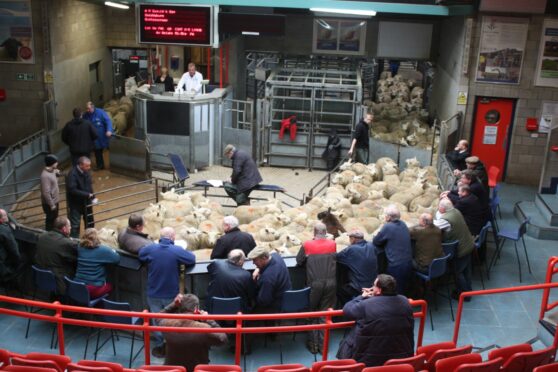A reduced supply of finished lambs across the UK, rising export volumes and lower imports from abroad have been supporting the lamb price in Scotland, according to Quality Meat Scotland (QMS).
New anaylsis from the levy board revealed that indications of a smaller lamb crop could result in the lamb market supply remaining low if the recent picture of firm export demand and soft import volumes continues.
Meanwhile, domestic retail lamb price inflation has slowed, which could help to underpin sales volumes this autumn, given continuing strong price increases for other proteins.
Iain Macdonald, Market Intelligence Manager at QMS said despite a slow start to the season, weekly finished lamb auction volumes have reached a normal autumn range in Scotland.
“Finished lamb prices remain below the new season peak, reached in May, but began September at a record level for the time of year at Scottish marts,” said Mr Macdonald.
He said at an average of 245p/kg lwt in the first week of September, prices were up 6% on the same week in 2022 and by 20% on the five-year average.
In Scotland, although the number of 2023-born lambs traded at marts has started to catch up with 2022 over the past month, it has been down 6% on 2022 in the season-to-date, with a similar story across the UK.
Mr Macdonald said that international trade has been a significant part of the equation.
Despite firm prices available for imports to the UK, improved market access for Australian lamb since the Free Trade Agreement came into force at the end of May, and relatively low prices in the Southern Hemisphere, import volumes have been surprisingly sluggish.
“Lamb prices in New Zealand are down by around a third on last year, clearing at £3.24/kg dwt on the South Island in early September, while Australia’s Trade Lamb Indicator has plummeted to as low as £2.26/kg dwt and £54 per head,” said Mr Macdonald.
Looking ahead to the remainder of the season, QMS says domestic supply is set to remain tight.
Following a dry autumn in 2022, there were reports of poor scanning rates, particularly south of the border, and June census data from England appears to support this view, with a 5% year-on-year reduction in lamb numbers.
With England accounting for around half of the GB flock, a smaller GB lamb crop this year seems almost certain.
“Given an annual kill of around 12m head across GB, a 3% reduction in the slaughter lamb crop would equate to around 350,000 fewer lambs,” said Mr Macdonald.
“So far, the fall in GB auction throughput is roughly equivalent to around 200,000 head, after factoring in that close to half of lambs will be sold in the ring. Therefore, a situation of relatively tight supply could persist. In a further indicator of the potential for tight supply later in the season, store lambs appear to have been sluggish to come forward so far at Scottish marts.”

